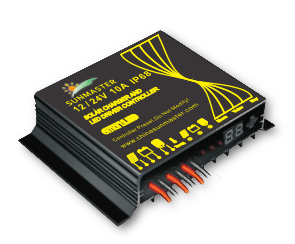Solar charge controller: PWM vs. MPPT
There are two methods of charging solar charge controller from a solar array/panel: the PWM and MPPT. These technologies are mostly used in the off-grid solar industry, and are both good options when it comes to charging your battery efficiently. When differentiating PWM and MPPT, the discussion is not going to be about which one is better than the other.
What should be determined when choosing between PWM and MPPT is the type which will work best in the design of your system.
In order to understand the difference between these two, let’s take a look at the usual power curve of a PV panel (figure 1). This is important as it shows the expected power generation based on the combined voltage and current generated by the PV panel. The ideal ratio of current to voltage in order to produce the most power is the Maximum Power Point, also known as the MPPT. This changes depending on the irradiation condition within the day.
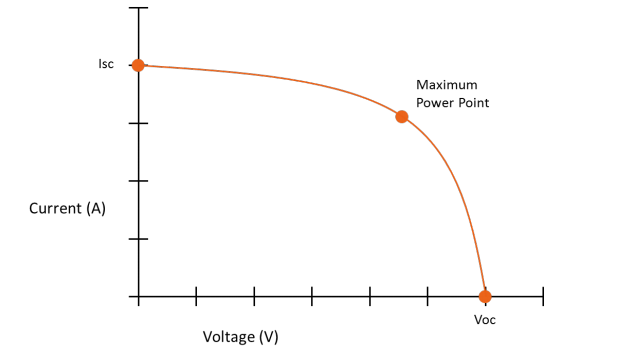
Figure 1: Power Curve of a PV Panel
PWM Charge Controllers
PWM stands for Pulse-Width Modulation. This comes into play when the batter bank is full. As it is charging, the solar charge controller lets in as much current as the PV panel can generate in order to achieve the target voltage for the charge stage of the controller. As the battery reaches its target voltage, the controller will then switch between the battery banks to the panel array. The battery bank will then be disconnected, which regulates the battery voltage and makes it constant. This quick switch method is called PWM, and what this does is it makes sure that your battery bank is charged while preventing the process of overcharging.
The PWM controller will usually operate slightly above the maximum power point. Figure 3 shows the operating range for PWM controllers.
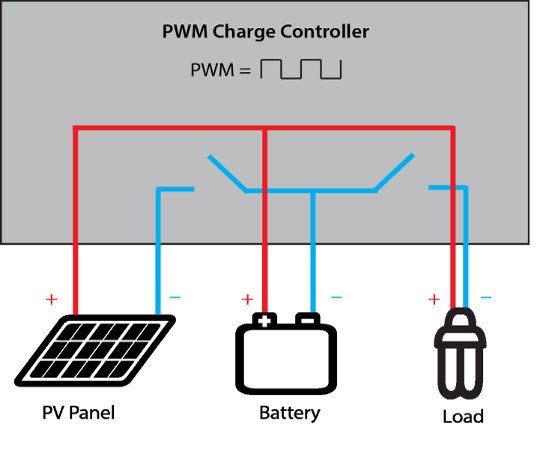
Figure 2: PWM Charge Controller |
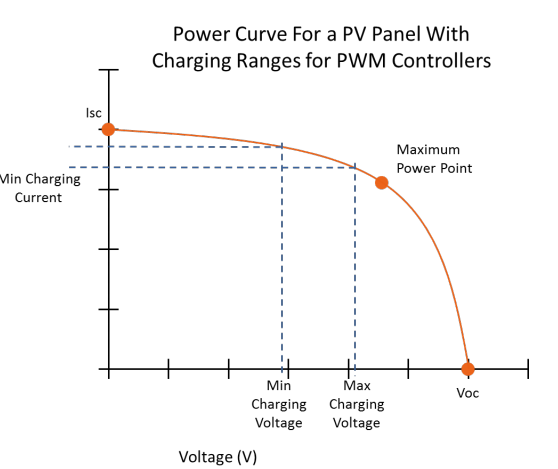
Figure 3: Power Curve for a PPV Panel |
MPPT Charge Controllers
MPPT or the Maximum Power Point Tracking provides an indirect connection between the battery bank and the PV array. This indirect connection includes a DC/DC voltage converter that takes extra PV voltage and transforms it into an additional current at a lower voltage without necessarily losing power.
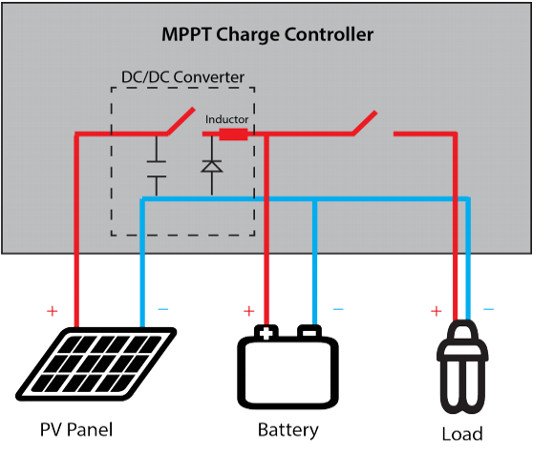
Figure 4: MPPT Charge Controller |
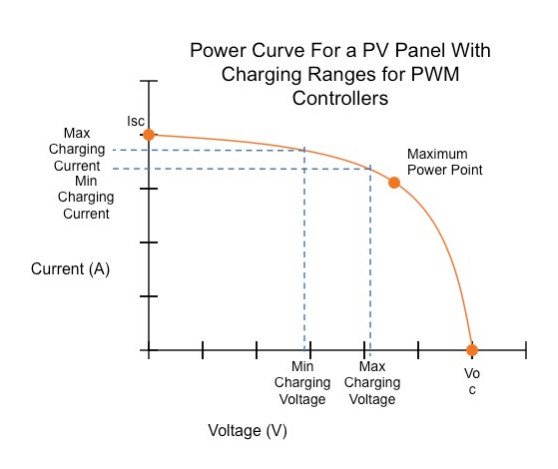
Figure 5: Power Curve for a PV Panel with Charging Ranges for PWM Controllers |
MPPT controllers are able to pull this off because of an adaptive algorithm that follows the MPPT of the PV array, which then adjusts the incoming voltage in order to maintain the most efficient level of power for the system in place.
Choosing the Appropriate Controller
When choosing the appropriate controller for you, you need to consider several factors. These include site conditions, size of array and load, system components, and cost of your solar power system.
|
– Temperature Conditions For cooler conditions, an MPPT controller would be the smarter choice for you. This is because as the solar module operating temperature goes down, the Vmp increases. With the MPPT controller, you can capture the excess solar module voltage in order to charge your batteries. This makes the MPPT controller 20-25% more effective than the PWM controller in cooler conditions. |
 |
The PWM controller, on the other hand, would be unable to catch the excess voltage as the battery charges at the same voltage as the pulse width modulation technology. However, when these panels are put into places with warmer temperature, their Vmp will decrease, and the peak power point will operate at a voltage closer to that of a 12V battery. Since there is no excess voltage to be transferred in this case, the utility of the MPPT will become unnecessary. This nullifies the advantage that MPPT has over PWM.
|
– Array to Load Ratio If the solar array is larger compared to the power draw from the batteries by the load, the batteries will more likely stay close to a full stage of charge. In this case, a PWM controller would be able to efficiently maintain the system without the added cost of an MPPT controller. |
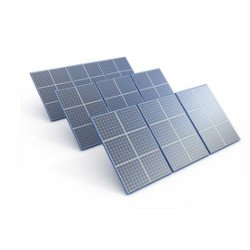 |
|
– System Size PWM controllers are better suited with low power systems due to three reasons. First, the PWM controller operates at a constant harvesting efficiency no matter the size of the array. Second, an MPPT controller is less efficient in low power applications. Lastly, the PWM is less costly than the MPPT controller, making it the more economical choice for customers. |
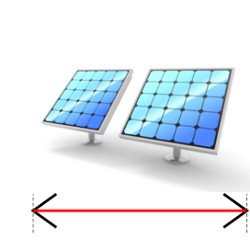 |
|
– Type of Solar Module Independent off-grid solar modules are usually 36 cell-modules that are compatible with both PWM and MPPT technologies. Other grid-tie solar modules available today are not 36-cells modules, making it incompatible with off-grid power systems. An example of this would be a 60-cell 250W panel. This is too low for a 24-Vold battery charging, and too high for a 12-Volt battery charging. With the MPPT technology, you can track the MPPT of these less expensive grid-tie modules when charging the battery. The PWM controller does not have this function. |
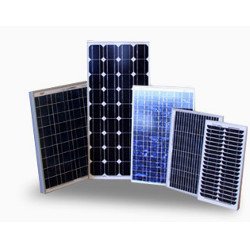 |
|
– Cost MPPT controllers are more costly than PWM controllers. However, the benefit to using MPPT is the fact that it is more efficient under particular conditions. If you want to purchase an MPPT, it would be better to check first if the specialized function of the MPPT can be applied at the given site conditions. If you find out that there the MPPT’s functions aren’t applicable in your chosen site, then it would be more economical for you to choose the PWM controller. |
 |
In conclusion, before choosing the controller for you, it would be better to check the site, its conditions, the functions you would need, and your budget for the technology. To make it easier for you to choose the kind of charge controller that you would need, here is a summary of comparison between the PWM charge controller and the MPPT charge controller. Make sure to take into consideration the factors presented above before purchasing your charge controller!
|
PWM Solar Charge Controller |
MPPT Solar Charge Controller |
|
|
Array Voltage |
PV array & battery voltages should match |
PV array voltage can be higher than battery voltage |
|
Battery Voltage |
Operates at battery voltage so it performs well in warm temperatures and when the battery is almost full |
Operates above battery voltage so it is can provide “boost” in cold temperatures and when the battery is low. |
|
System Size |
Typically recommended for use in smaller systems where MPPT benefits are minimal |
≈ 150W – 200W or higher to take advantage of MPPT benefits |
|
Off-Grid or Grid-Tie |
Must use off-grid PV modules typically with Vmp ≈ 17 to 18 Volts for every 12V nominal battery voltage |
Enables the use of lower cost/grid-tie PV Modules helping bring down the overall PV system cost |
|
Array Sizing Method |
PV array sized in Amps (based on current produced when PV array is operating at battery voltage) |
PV array sized in Watts (based on the Controller Max. Charging Current x Battery Voltage) |



